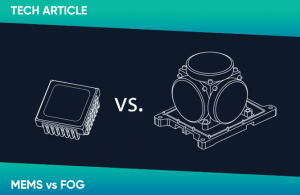Talk:How to edit a page on GDPRhub
Ring laser gyroscope (RLG) has been dominating the inertial navigation market since its first appearance in 1963, and its dominant position is gradually facing the challenge of fiber optic gyroscope (FOG) technology improvement. These technological improvements are slowly occupying RLG’s position in the inertial navigation market. Let's learn MEMS and FOG both for a good understanding! https://www.ericcointernational.com/gyroscope/mems-gyroscope(High Performance North Seeking MEMS Gyroscope with 0.02°/hr bias instability, 0.005°/√hr angular random walk and small size for 11 x 11 x 2mm) https://www.ericcointernational.com/north-finders/fiber-optic-gyro-north-finder/er-fiber-optic-gyro-north-finder-for-mining.html(Low Cost Fiber Optic Gyroscope with 0.05~0.1º/h bias stability and 78.5×78.5×35mm. Otherwise, it's suitable for flight control platform) Will MEMS repeat this cycle?
This is a problem worth discussing. Considering that #mems technology has made great progress in recent years, MEMS gyroscope sensors have achieved higher accuracy, improved error characteristics and better g sensitivity, thus significantly improving the overall MEMS performance. These two technologies now often face each other in tactical and navigation level applications, and there is no obvious winner.
Choosing inertial technology used to be a simple decision, but as the competition between these two methods intensifies, navigation engineers are now forced to consider many factors according to their specific applications, and then choose any solution.
Fog is still dominant in key applications
Optical fiber is still a proven solution for high-end applications, gradually replacing aging RLG technology where possible. This technology still has unparalleled performance, thanks to its extremely low noise #fiberoptic gyroscope, which can achieve extremely accurate navigation, and low deviation instability and drift compared with other technologies, which is crucial to maintain normal operation in the GNSS denial environment.
Fog INS is indeed considered to be more suitable for key navigation solutions such as deep-sea underwater navigation and aerospace applications. Although its high cost discourages it from the low-end market, end users who are less price sensitive, such as military and commercial aircraft manufacturers, are willing to pay more for the additional accuracy. Its inherent low drift also makes it the first choice for long-term GNSS denial applications, because the overall error range is even lower than the most accurate MEMS ins available.
What's more, if you wanna learn more knowledge and news about MEMS, FOG, INS and aerospace etc. I'm sure you can find you want here:https://www.ericcointernational.com/gyroscope/mems-gyroscope If you are interested in this product ,you can leave your company info with email and I will send the catalog and datasheet!

